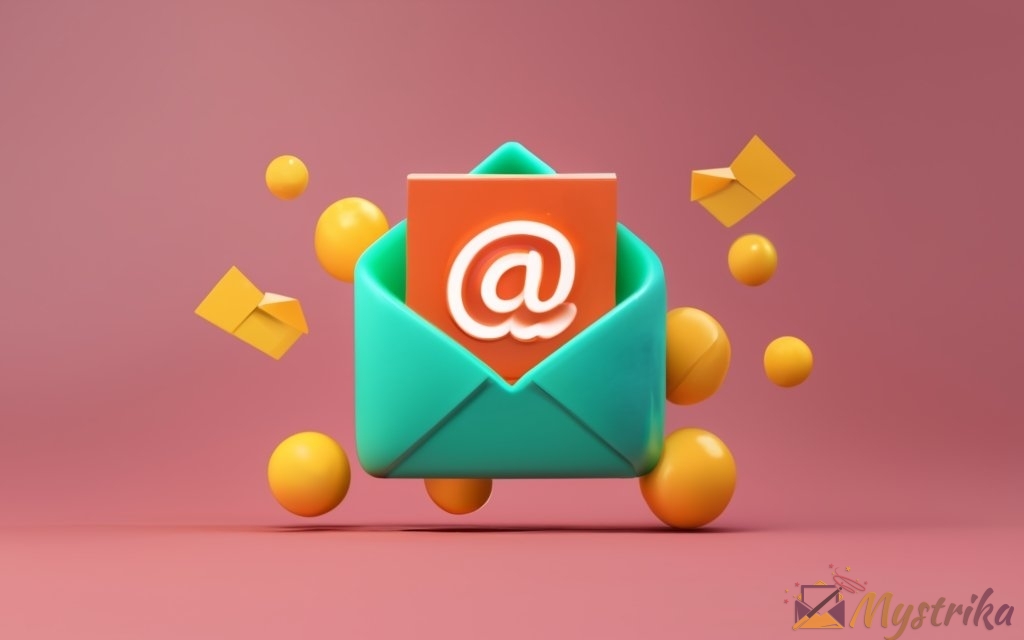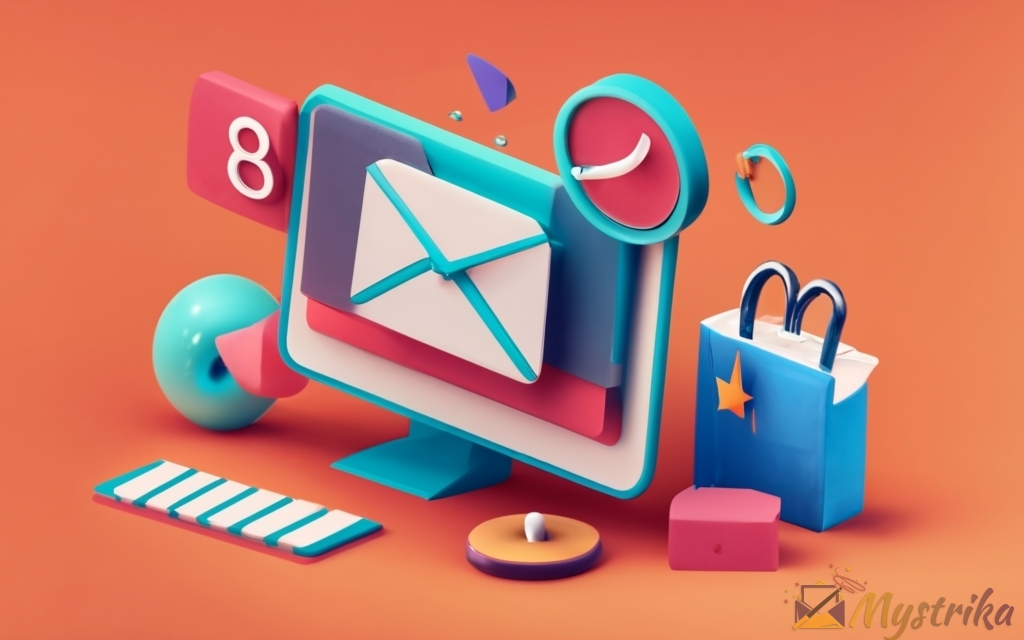We’ve all been there – you meet someone interesting at an event but aren’t sure how to craft the perfect networking email. This comprehensive guide reveals insider tips and templates for writing compelling, click-worthy subject lines guaranteed to get your emails opened!
Why Your Networking Email Subject Line Matters
In the age of inbox overload, crafting an irresistible networking email subject line is more critical than ever. With the average office worker receiving 121 emails per day, your subject line needs to instantly grab attention and provide enough context to entice the recipient to open your message.
Otherwise, your carefully crafted networking email could get lost in the shuffle or sent straight to the trash folder unread.
Let’s examine the key reasons an engaging, personalized subject line matters for making meaningful connections and expanding your professional network via email:
Grabs Attention
With endless emails flooding inboxes daily, recipients have trained themselves to quickly scan subject lines to determine what requires their attention now versus what can wait.
Your subject line has mere seconds to capture interest before the person moves on.
Strong networking email subject lines are concise, compelling, and speak directly to the recipient. For example:
- Josh, your recent panel on startup funding stood out
- “Hey Christine, thanks for the marketing tips!”
- “Reid, hope you’re doing great – Rob from the tech conference”
These make smart use of names, reference recent interactions, and feel like they were written just for that individual.
On the other hand, tired cliches like “Hope you’re well!” or vague messages like “Catching up” are all too easy to gloss over.
Being crisp, personalized, and intrigued encourages the desired “I better open this!” reaction.
Provides Context on the Email Content
Recipient’s also depend on subject lines to quickly discern whether the contents of an email are truly relevant and worth their time.
For networking outreach specifically, the subject line should:
- State the purpose directly, like “Seeking industry advice”
- Mention events or topics you connected on previously
- Use names of mutual connections
This context helps the reader decide if your message aligns with their interests or area of expertise enough to warrant opening.
Encourages Opening Rather Than Ignoring
Studies show 35% of email recipients open messages based solely on the appeal of the subject line. That percentage skyrockets when subjects lines are personalized and speak to shared experiences.
Conversely, a bland or ambiguous subject can discourage opening. People tend to ignore emails when they can’t quickly tell who it’s from or what it’s about.
Using the recipient’s name and aiming for subject lines between 40-50 characters can significantly increase open rates for networking emails.
Sets Expectations for the Communication
Beyond compelling the open, effective subject lines shape expectations about the nature of the conversation and relationship.
A warm, thoughtful subject line lays the groundwork for a friendly rapport and ongoing exchange. For example:
- “Coleen, your advice on streamlining workflows was super helpful!”
This implies a spirit of gratitude and positivity right from the start.
On the other hand, a terse “Call re: proposal” sets more formal business expectations. While not necessarily bad, this is important to align with your networking goals.
In summary, the subject line has an outsized influence on the success of networking emails. Treat it as the “handshake” that makes that critical first impression.
Aim for subject lines that are:
Personalized: Use the recipient’s name and details specific to your relationship whenever possible. This hugely boosts relevance.
Clear: State the purpose directly. If asking to meet, say so. If introducing others, spell it out.
Conversational: Adopt a warm, friendly tone. This gets people engaged and willing to respond.
Compelling: Give them good reason to open your email. Pose an interesting question or highlight a shared interest.
Concise: Get your message across in 3-5 words and under 50 characters so the full subject line shows.
With practice, you’ll get a feel for subject line phrasing that speaks uniquely to each recipient and makes your emails irresistible.
Small tweaks can have an outsized impact, so don’t underestimate the role your subject line plays in connecting with new networking contacts.
A personalized, thoughtful subject line is the key to starting meaningful relationships and getting your carefully crafted messages read, not deleted.
Prioritize writing networking email subject lines that grab attention, provide useful context, encourage opening, and set the right tone for your outreach goals. This small but critical component can mean the difference between a conversation and radio silence.
Mastering this crucial skill will serve your networking and career advancement efforts for years to come. Those you’re reaching out to will recognize you took the care to craft subject lines specifically for them.
When done effectively, your emails will stand out in crowded inboxes, spark excitement, and inspire recipients to learn more about you and the value you provide.

How to Craft an Effective Networking Email Subject Line
Mastering the art of writing compelling yet professional networking email subject lines takes practice. However, following some core best practices can help you craft subject lines that capture attention and inspire engagement.
Let’s explore the essential dos and don’ts for creating subject lines that get your carefully crafted networking emails opened, read, and responded to:
Keep it Concise and Scannable
Strive for networking email subject lines that are scannable – meaning the recipient can quickly grasp who it’s from and what it’s about.
Keep subject lines to 40-50 characters maximum. Much longer, and they risk being cut off on mobile devices or in preview panes.
Ideally use 3-5 words to convey the essence. Verbose sentences are hard to parse at a glance.
Avoid lengthy phrases and unnecessary words. Filler words like “I wanted to touch base about…” are fluff.
Great subject line examples that are concise and scannable:
- “Lunch on Tuesday, Sarah?”
- “Quick intro – Mark Johnson”
- “Advice for aspiring marketers?”
These allow the recipient to immediately identify the sender, purpose, and call to action without having to work too hard.
Make it Personalized
Personalized subject lines boost open rates by signaling the message within is unique to the recipient, not bulk spam mail.
Ways to make networking subject lines feel personalized:
Include the recipient’s first name. This is a simple but powerful tactic. “Hey Sarah, drinks soon?”
Reference your relationship or where you met. Remind them of your tie – “Greg from the supply chain conference”
Mention mutual connections or interests. Draw attention to things you have in common.
Avoid impersonal subject lines like “Meeting request” or “Business opportunity.” Without some degree of personalization, your email is likely to be overlooked.
Spark Curiosity and Intrigue
You want subject lines that create an irresistible urge in the reader to open your email. Here are some ways to craft intriguing subject lines:
Ask a thoughtful question related to their work or interests. “How do you vet startup founders?” sparks curiosity.
Make an insightful statement that demands a response. “That was a brilliant keynote address!”
Invite further discussion on a compelling topic. “Interested to hear your thoughts on the future of AI”
Elevate your subject line from basic to intriguing by hooking the reader with an unresolved question, compliment, or call for their perspective.
Provide Clear Context
While you want to be concise, ensure your subject line provides enough context on why you’re contacting them and what you’d like to discuss.
Ways to give clear context:
State the purpose directly. Get right to the point with “Seeking advice on launching a podcast”
Mention relevant events or topics you previously connected on. “Rewatching your MozCon videos”
Use names of mutual connections. “Alisa mentioned we should chat”
Without clear context, the recipient is left guessing about the nature of your outreach, making them less likely to open.
Be Polite and Respectful
While certainly attention-grabbing subject lines are ideal, ensure your phrasing comes across as polite and professional.
Use a warm, friendly tone with phrases like “Hope you’ve been well!” and words like “please” and “thank you.”
Avoid overly casual or familiar language until you know someone better. Lines like “Got time for a quick call?” may seem presumptuous early on.
Don’t apply pressure or expect immediate responses. Phrases like ASAP! and “Needing your help urgently” can stress recipients out.
The networking email process should feel natural and beneficial for both parties. Prioritizing respectful subject lines helps nurture relationships built on mutual appreciation and trust.
Additional Tips and Tricks
- Use brackets around request types like [Advice], [Meet Up], [Intro] so the nature of your ask is instantly clear.
- Limit punctuation like ellipses, dashes, underscores. They clutter the subject line visually.
- Avoid spammy phrases like “Make money fast!”. These are insta-delete red flags.
- Consider adding an emoji to add personality and approachability when appropriate. But use judiciously.
- Experiment with urgency and urgency words like “time sensitive” and “urgent” – but only if truly warranted.
- Try tying subject lines to dates, times, events to create a sense of now or fleeting opportunity that compels open.
Common Mistakes to Avoid
On the flip side, there are some notorious subject line pitfalls that can hinder your networking efforts:
- Using a generic greeting like “Hello” or “Hi there!” that fails to personalize
- Overusing exclamation points or ALL CAPS which can appear overeager
- Making requests without context like “Quick call?” or “30 mins next Tuesday”
- Using boring, overused phrases like “Hope you’re well!” or “Let’s catch up!”
- Relying too much on cliches like “Touching base” “Pick your brain” “Looping in”
- Quirky misspellings or odd spacing like “He llo” or “Cong ratz”
- Incorrect details like saying you met at one event when it was really another
Pay close attention to the impressions your subject lines make to avoid self-sabotage. A sloppy or off-putting subject line overwhelms the content within.
The Importance of Testing and Refining
Mastering networking email subject lines is an iterative process. Use A/B testing to find out what works.
Try slight variations on your phrasing to see which subject lines perform best by:
- Monitoring open rate data – Which led to more opens?
- Asking recipients for feedback on subject lines that stood out
- Tracking response rates – Did certain subject lines elicit more replies?
Use these insights to refine your approach and personalize your phrasing for each contact’s preferences.
Small tweaks can result in outsized impact. With practice, you’ll become adept at writing irresistible subject lines tailored to each recipient that get your foot in the door and kickstart meaningful new relationships.
The subject line might be small, but in the world of networking emails, it represents your biggest opportunity to grab attention and set the right tone for your outreach. Prioritize getting this crucial component right, and the rest of your thoughtful message has a chance to shine through.

Networking Email Subject Line Templates and Examples
Now that we’ve covered core strategies for crafting effective networking email subject lines, let’s look at Networking subject lines that actually works and can be applied for common scenarios like introductions, follow-ups, asking for advice, making connections, and proposing collaborations.
These real-world examples help illustrate how to apply best practices to your own outreach efforts.
Introductory Networking Emails
Making new connections is vital for expanding your professional network. Use your introductory networking email subject lines to make a strong first impression.
“Hello [Name], I’m [Your Name] from [Company]”
This format puts their name first and center, identifies who you are, and provides helpful context on where you’re from. Short, personalized, and clear.
“I loved your presentation on [Topic] at [Event]”
Complimenting their work is flattering. Be specific by mentioning the presentation topic and where you saw them speak.
“Fellow [Industry] Professional Seeking to Connect”
Highlighting a shared industry, role, or specialty helps establish common ground right off the bat.
“Hope you’re doing well, [Name]!”
A warm, polite greeting that includes their name comes across as friendly yet professional.
“Hey [Name], let’s connect!”
Simple, conversational language can work well once you’ve met someone briefly in person.
“Met you briefly at [Event] – [Your Name] here!”
Jog their memory by citing where you met and reintroducing yourself.
“This is [Your Name] – got your contact at [Event]”
If they handed you a business card, this politely reminds them of that exchange.
“Fellow [School Alumni] hoping to connect!”
Shared alma maters give an automatic sense of community.
“Quick intro – [Your Name] here”
Doesn’t get more direct than announcing you’re introducing yourself and stating your name.
Follow-Up Networking Emails
Following up after meeting someone at an event or conference is key to cementing new relationships. Use subject lines that acknowledge your initial interaction.
“Great Meeting You at [Event], [Name]”
Personalize by referring to the event where you met them.
“Following Up on Our Conversation about [Topic]”
Remind them what you discussed by mentioning the specific topic.
“Thanks for the [Industry Advice] – A Few More Qs”
Show gratitude for their guidance and let them know you have more questions.
“[Name], just circling back on [Topic]”
Address them directly and restate the topic of your initial conversation.
“Hoping you can make [Upcoming Event] too, [Name]!”
Name the upcoming industry event you hope to also see them at.
“Hope you enjoyed [Event] as much as I did!”
Bond over your shared positive event experience.
“Hey [Name] – Hope all is well with you!”
A warm check-in on how they’re doing keeps communication friendly.
“How’s [project we discussed] coming along?”
Ask about progress on something specifically you discussed.
“Wanted to continue our [Topic] discussion”
Make clear you’re seeking to continue a previous in-depth conversation.
The key for follow-up networking emails is directly referencing your initial contact moment to refresh their memory. With a flood of new people at events, your prompt outreach ensures you stand out.
Asking for Advice or Opinions
Industry leaders are often happy to share their expertise when asked politely. Use subject lines that humbly seek their guidance on topics they know well.
“Quick Question about [Topic] when you Have a Moment”
Shows you respect their time but are hoping to pick their brain.
“Your Thoughts on [Industry Trend]?”
Ask directly what their opinions are on a current topic.
“Picking Your Brain on [Area of Expertise]”
Flattering phrase that lets them know you value their specific knowledge.
“Got a minute to chat about [Topic], [Name]?”
Casual request for a quick conversation on a subject they can advise on.
“Could use your take on [Idea], if you have time”
Making clear their insights would be useful but not urgent.
“Need an [Industry] Insider’s view on [Topic]!”
You’re hoping to leverage their niche experience to inform your own perspective.
“Looking for your advice on [Thing I’m Working on]”
Humility goes a long way – we all need help sometimes.
“Any tips for a fellow [Role] on [Challenge]?”
Bond over shared roles and seek their guidance on an issue you’re facing.
“You’re the expert on [Topic] – help me out?”
Flatter their expertise while being honest that you could benefit from their lessons learned.
The common thread is graciously acknowledging their authority on a subject and explaining how their input could enlighten your own approach.
Making Introductions
A huge value-add networking provides is connecting people in your network who would mutually benefit from knowing one another.
Subject lines for introduction emails should convey why you feel they should meet.
“Connecting You with [Name]”
Simple and direct about your intention.
“Thought You’d Enjoy Chatting with [Name]”
Makes the introduction based on believing they have shared interests to connect on.
“Can I Introduce You to [Name]?”
Polite permission-seeking phrasing before making the connection.
“I’d like to introduce you to a colleague, [Name]”
Framing the new person as a colleague gives built-in credibility.
“[Name], meet [Name] – you two should connect!”
Direct but enthusiastic tone.
“Do you know [Name]? I think you’d hit it off!”
Frames the introduction as you seeing similarities between them.
“I know two [Industry Experts] who should meet – you and [Name]!”
Bonding over a shared level of industry expertise helps explain the value of the introduction.
The common thread is clearly conveying why this new connection would benefit both parties based on shared interests, goals, or experiences.
Discussing Collaborations
Proposing a new collaboration can feel intimidating, but thoughtful email subject lines can help subtly gauge interest before diving into logistics.
“Potential [Project] Collaboration Opportunity?”
Frames it as an open-ended possibility to be discussed, not a done deal.
“[Name], What Do You Think about Working on [Idea] Together?”
Speaks directly to the recipient versus announcing a unilateral decision.
“Ideas for Partnering on [Initiative]”
Leaves the door open for their input on how a collaboration might work.
“Let’s team up on [Project]! What’s your availability?”
Builds excitement first before asking about logistical availability.
“I think we could accomplish great things together on [Idea]”
Expresses your belief in the potential without overpromising.
“Any interest in collaborating? I have some thoughts”
Checks their baseline interest first before diving into specifics.
“When can we discuss collaborating on [Thing]?”
Prioritizes finding a time to discuss rather than presenting it as a done deal.
The common thread is tactfully seeing if there is mutual interest before formalizing any plans. Don’t jump straight to logistics – collaboration must be a shared vision.
Additional Networking Emails
Beyond introductions and follow-ups, there are a few other common scenarios for reaching out to connections.
“Congratulations on [Achievement], [Name]!”
Recognizing their accomplishments helps maintain the relationship.
“Hello again, [Name] – let’s reconnect soon!”
A friendly nudge to get back in touch after time has passed.
“Hey [Name], I saw your tweet about [Topic] – great stuff!”
Commenting on their social media activity makes them feel seen.
“Circling back on [Past Project] – what’s next for you?”
Check in on progress of initiatives you previously discussed.
“[Name] – How’s [Company/Role] going? Let’s catch up!”
A casual check-in on their current job or venture.
“Hope you’re enjoying [Interest Hobby] this season!”
References a hobby you know they enjoy to personalize.
Other examples:
- “Haven’t talked in a while, you good [Name]?”
- “Let’s grab coffee next week, my treat!”
- “Read your recent Forbes article – fascinating stuff!”
- “Saw [Company] has been killing it lately, wow!”
- “How was your trip to [Location]?”
The goal is to think beyond the expected scenarios and incorporate subject lines that show you’ve paid attention to their company, interests, and life events.
This helps strengthen bonds and demonstrates the relationship is about more than just taking. Give before you ask to build trust and rapport.

Mistakes to Avoid
While we’ve covered many examples of effective networking email subject lines, there are also some common pitfalls to be aware of.
Avoiding these blunders will ensure your emails make the right impression and inspire engagement rather than irritation or disregard.
Let’s review key mistakes to steer clear of when crafting your subject lines:
Cliches like “Hope You’re Well” or “Let’s Catch Up”
Some standard networking email phrases have become so overused they’ve lost their meaning and come across as disingenuous.
Subject lines like “Hope you’re well!” or “Let’s catch up soon!” are pleasant at face value but lack originality or personalization.
Recipients instantly recognize these as copy/paste pleasantries rather than genuine interest in connecting. After all, you don’t know how they are doing.
Instead, make subject lines more distinctive and thoughtful:
- “Haven’t talked in a while, you good Anita?”
- “Saw you got promoted, congrats!!'”
- “How’s the team at the new Denver office settling in?”
These show you’re paying attention and care about the actual person, not just sticking to scripted niceties. Avoid using the same trite phrases as everyone else.
Boring Greetings like “Hello” or “Hi There”
Similarly, standard greetings like “Hello” or “Hi There” are completely forgettable and give the recipient no context for your email.
They mimic spam messages and give no personalized details to make your email stand out as important and worth their time.
get creative and add engaging details:
- “Karen, your closing keynote was phenomenal!”
- “Long time Ricky – let’s grab lunch!”
- “Happy Holidays Margaret – hope the family is well!”
Skip the boring greetings altogether or follow them up with details demonstrating you care about them as more than just a contact.
Overly Salesy Language
The goal with networking emails is to establish two-way relationships, not make aggressive sales pitches.
Avoid subject lines that feel promotional like:
- “Act Now – Your Free Trial Awaits!”
- “Incredible Offer Inside This Email!”
- “Your Business Can’t Thrive Without This…”
These overly salesy subject lines are off-putting. They give the impression you view the recipient as a sales lead first, networking contact second.
Use warmer, more conversational language:
- “Quick question on your thoughts…”
- “Hope I’m not catching you at a bad time…”
- “When you have a minute, do you have advice on…”
The focus should be seeking their insights, not promoting your product or service. Sales-y language puts them on guard instinctively.
Excessive Exclamation Points or Capitalization
Avoid subject lines that come across as too eager or aggressive:
- “Let’s Talk ASAP!!”
- “We Need To Discuss Our Proposal!!”
- “ACT NOW For This Limited Time Offer!”
Too many exclamation points or ALL CAPS gives the impression you’re shouting at recipients.
This can be off-putting, especially for introductory outreach. It also may trigger spam filters.
Stick to standard title case formatting and limit punctuation for networking emails:
- “Have time for a quick chat this week?”
- “Thinking of grabbing drinks after the conference if you’re around!”
- “When you get a chance, do you have advice on good CRMs?”
The friendly, gracious tone establishes the right networking rapport without being pushy or overbearing right off the bat.
Unclear or Confusing Phrasing
Avoid using confusing language or leaving the recipient guessing about your intent:
- “Key Strategic Synergies Discussion”
- “Future Preparation Inquiry”
- “Let’s Interface Soon!”
Undefined jargon and ambiguous phrases don’t provide enough context to compel opening. If they’re puzzled by your subject line, they may simply delete the email unread.
Be clear in your language:
- “Developing our partnership”
- “Planning for 2023 initiatives”
- “Can we set up a quick call to discuss?”
Simple, direct language removes doubt about next steps. Don’t try to sound overly business-like with complex phrasing – keep your subject line clear.
Spelling or Grammar Errors
Typos, obvious spelling errors, or blatant grammatical mistakes are off-putting in professional correspondence:
- “Lets due lunch somtime”
- “You’re presenation was amazing!”
- “Their our many reasons we should connect”
These errors come across as sloppy and undermine your credibility. They also increase the chances your email gets marked as spam.
Always proofread subject lines (and emails) before sending:
- “Let’s do lunch sometime”
- “Your presentation was amazing!”
- “There are many reasons we should connect”
Accurate spelling and grammar gives recipients confidence in your abilities and attention to detail. Don’t let easily avoidable mistakes sabotage your networking emails.
The bottom line is that your networking email subject lines represent you. Avoid using trite phrases, salesy language, or sloppy typos that detract from the professional, friendly impression you want to make.
With consistent effort, you’ll identify phrases and mistakes to avoid while crafting subject lines that make each recipient feel valued, not just like another name on your outreach list.

Tips for Writing Networking Email Bodies
Crafting an irresistible subject line is an important first step, but you also need a compelling email body to make the desired impact and strengthen new connections.
Here are tips to write engaging networking email bodies that continue building rapport:
Continue Personal, Friendly Tone
Your email body should extend the warm, conversational tone established in the subject line.
After a subject line example like “Hey Karen, thanks for the marketing tips!” the email body copy should continue in an equally personal and appreciative style:
“Karen, I wanted to send you a quick thank you for taking the time to explain your Instagram strategy to me at the conference last week. As someone just getting started with building my profile, hearing how you’ve grown your following to over 10k followers and leveraged that to [accomplishment] gave me so many useful insights…”
Other strategies:
- Refer to them by first name throughout the email to keep it friendly
- Share a specific detail about yourself or interest to find common ground
- Express enthusiasm about helping them in return: “Please let me know if there is ever anything I can help with!”
Matching the subject line’s warmth in tone helps strengthen the new relationship.
Provide Context and Remind Them Who You Are
Even after a great subject line, gently remind them of who you are and where you met:
“Hi Karen, this is Rob Smith from the Social Media Marketing Conference last week in Chicago. We chatted for a bit after your keynote panel on leveraging influencers.”
Providing context upfront saves them the trouble of wracking their brain to remember and provides reassurance this is not spam mail from a stranger.
Other helpful context:
- How you got their email address
- Who connected you or gave you their contact info
- What presentation of theirs you attended
The goal is to jog their memory on the ties you have and relationship you’re looking to build. Don’t make them work hard to place who you are.
Make Your Ask Clear and Easy to Say Yes To
If reaching out hoping to get on a phone call, meet for coffee, or collaborate on a project, make the ask straightforward:
“Would you have 30 minutes to jump on a call sometime in the next week? I’d love to pick your brain on tools for creating content more efficiently as we scale our production. Please let me know if you have any availability!”
This makes your request simple and actionable.
Other tips for asks:
- Give suggestions of days/times that work for you
- Keep the commitment low for first meetings: a call vs multi-day conference
- Offer flexibility and let them choose what works for their schedule
The easier the ask, the more likely they’ll say yes. Don’t require heavy lifting upfront.
Close With a Call to Action
Wrap up your email by clearly stating any requested next steps:
“If you’re open to a quick call, please let me know a few days/times in the next week that could work for you and I’ll get a calendar invite sent over! Really looking forward to speaking with you and appreciate any insights you can offer. Talk soon!”
Clearly articulating what you’d like them to do makes it easy for them to take action.
Other examples of closing CTAs:
- “Let me know if you have any other times that work.”
- “If you have any advice on vendors to look into, I’m all ears!”
- “Thanks in advance for any guidance you can provide!”
Tell them explicitly what you’d like them to do next if interested in connecting. Don’t make the recipient guess how you’d like them to respond.
With a warm tone, helpful context, clear ask, and defined next steps, your email body provides the details that turn an intriguing subject line into a compelling start to a new professional relationship.

Following Up Politely After No Response
Even with a flawless networking email, lack of any response can sting. But professional persistence is key – follow up politely if your initial outreach goes unanswered.
Here are tips for courteously following up if a recipient doesn’t respond:
Remind Them Where You Met and When You Last Emailed
Jog their memory by providing context:
“Hope you’re doing well! This is Rob Smith – we met at the Digital Marketing Conference in Austin last month and chatted near the search engine optimization panel. I emailed you a few weeks ago about potentially grabbing coffee but wanted to follow up in case my message got lost in the shuffle.”
Refresh their recollection of who you are and your original ask. But don’t admonish them for not responding – assume positive intent.
Reiterate Why You Want to Get in Touch
Succinctly re-covering the purpose establishes this remains a worthy cause:
“I’d love to take you up on the offer to connect sometime. I’m hoping to learn more about your experiences using influencer marketing to build brand awareness in the first year. Please let me know if you’d be open to a quick video chat in the next few weeks!”
This politely redirects their attention to why you want to meet without demanding their time or putting them on the spot.
Be Understanding of Busy Schedules
Emphasize you know their time is valuable:
“Of course, I’m sure you’ve been swamped since the conference. No pressure at all if you can’t make time right now. But if you do have availability coming up, please let me know as I’d appreciate any wisdom you’re open to sharing!”
Giving an easy, no-strings-attached opt out demonstrates you respect their priorities and don’t take it personally if they can’t meet.
Other Tips:
- Don’t phrase follow-ups as confrontational questions like “Did you get my email?”
- Avoid blow-by-blow recaps of all previous attempts to connect. Keep to high level context.
- Mirror their preferred cadence; don’t pester with overly frequent follow-ups.
- If you must press, politely acknowledge you may have slipped through the cracks.
The goal is to politely stay top of mind without badgering them. Give the recipient the benefit of the doubt and offer outs if they remain unavailable to connect.
With no implicit obligations, they can respond sincerely if interested or let the outreach naturally fade away without discomfort. The ball remains in their court.
Sample Follow Up Email Copy:
Subject Line: Checking in on my previous email
Hi Karen,
I hope you’ve been doing well! I wanted to circle back on the email I sent you a few weeks back after we met at Robin’s retirement party. I completely understand you must have a full plate balancing [company name] and family! No pressure at all, but I did want to reiterate that I’d love to take you up on the offer to connect sometime in the next few months.
As mentioned, I’d really appreciate the chance to learn more about your experiences scaling a company culture remotely. Please feel free to reach out if you have any availability for even just a 30 minute call. I’m happy to work around what fits your schedule best.
Wishing you continued success!
Todd
The tone remains warm and deferential. By giving them an easy way to decline without repercussion, they can make their availability known only if sincere.
In summary, remain cordial and don’t take non-response personally. Have confidence they’ll reply if and when they’re able. With patience and understanding, you can politely nudge without nagging.

Measuring and Improving Subject Line Performance
To become truly adept at writing irresistible networking email subject lines, you must embrace continuous testing and refinement.
Leverage data, analytics, and recipient feedback to constantly refine your subject line approach:
A/B Test Different Options
A/B testing different subject line versions is the best way to determine what resonates most.
For example, you could test:
- “Quick networking request” vs “Looking forward to connecting!”
- “Can we grab coffee?” vs “Have time for a coffee chat?”
- “Hello [Name]!” vs “Hey there, [Name]!”
Tools like Mailshake make A/B testing easy by randomly sending each version to a split sample of your recipient list and tracking open/reply rates for each.
The subject line that yields higher open and response rates is the winner for that recipient segment. Rinse and repeat testing new variations.
Analyze Open and Response Rates
Pay close attention to analytics for each networking email campaign and subject line used:
- Open rates show whether subject lines inspired opening the email
- Response rates indicate if your ask within the email led to replies
Segment this data by recipient traits like industry, seniority level, location, etc. to identify trends.
For example, certain subject lines may perform consistently better with C-Suite vs mid-level contacts. Use this intel to refine your segmentation.
Refine Based on Data and Insights Gained
Let data guide your decision making. If a subject line template like “Lunch on [Day]?” gets a 10% higher response rate than “Have availability next week?”, make that your go-to.
Or if short 4-5 word subject lines consistently outperform longer verbose ones, tighten things up.
Also pay attention to informal recipient feedback:
- “I liked how your subject line mentioned the podcast episode I was on – made me want to open and respond!”
- “Hearing from alumni is always great, but maybe don’t say ‘long time no see!’ if we haven’t talked in a while.”
Use all sources of information to finetune your approach over time. Personalization at scale takes diligence.

Tools to Use
While crafting effective networking email subject lines takes creativity and effort, the right tools can streamline the process and make personalization at scale achievable.
Here are some top tools to support your networking email efforts:
Mystrika – Mystrika is an all-in-one cold email platform with excellent features for personalizing and automating outreach. Key features like mail merge, sequencing, and email analytics help you craft targeted subject lines, send intelligent follow-ups, and optimize performance.
Reply – Reply another tool that can make it easy to track opens, clicks, and replies to your emails.
Surveys – Ask recipients directly what type of subject lines capture their interest and make them want to open. Feedback can reveal preferences to incorporate.
Don’t go at it alone. The right tools help streamline personalization, automate follow-ups, analyze performance data, and facilitate testing. Look for platforms purpose-built with the busy networker in mind.
With practice and persistence, you will get a feel for subject lines that resonate most powerfully. Maintain a growth mindset, stay curious, and always be testing.
Recap and Key Takeaways
Making meaningful connections starts with crafting compelling subject lines that get your networking emails opened.
In this comprehensive guide, we covered:
- Why networking email subject lines matter – Grabs attention, provides context, encourages opening, sets expectations
- How to write effective subject lines – Concise, personalized, intriguing, clear, polite
- Subject line examples and templates – Introduction, follow-up, asking for advice, making introductions, proposing collaborations
- Common mistakes to avoid – Clichés, boring greetings, salesy language, confusing phrases
- Tips for writing the email body – Warm tone, clear ask, strong call to action
- Following up politely – Remind of context, restate purpose, defer to their availability
- Measuring and optimizing performance – A/B testing, response tracking, recipient feedback
The key takeaways are:
- Personalize subject lines with names, shared connections, past interactions
- Intrigue recipients by asking smart questions and complimenting their work
- Keep subject lines focused, scannable, and under 50 characters
- Continually test and refine your subject lines based on data
- Avoid common mistakes like excessive punctuation or spammy phrases
- Mirror the warm tone of your subject line in the email body content
With compelling subject lines, your networking emails will stand out and inspire recipients to learn more about you. Master this crucial skill to unlock opportunities through new high-value connections.
Frequently Asked Questions
Here are some frequently asked questions related to networking email subject lines:
What are some good networking email subject line examples?
Some effective examples include:
- “Hello [Name], I’m [Your Name] from [Company]”
- “Thanks for the advice on [Topic], [Name]”
- “Hoping you can make [Upcoming Event]!”
- “Quick question about [Industry Topic]”
- “Congratulations on [Achievement], [Name]!”
How long should a networking email subject line be?
Ideally between 40-50 characters so the full subject line is visible on most devices. Keep it concise at 3-5 words.
How do you personalize a networking email subject line?
Personalize by including the recipient’s name, mentioning where you met, referencing a previous conversation, tying to their interests, or noting mutual connections.
What are some networking email subject line templates?
Intro: “[Name], I’m [Your Name] from [Place We Met]”
Follow-up: “Great catching up at [Event], [Name]!”
Advice: “Got a minute to discuss [Topic]?”
Introductions: “Connecting you with [Name]”
What should you avoid in a networking email subject line?
Avoid generic phrases, excessive punctuation, confusing language, spelling errors, urgent demands, or salesy wording. Keep it friendly and professional.
How can you test and improve networking email subject lines?
Use A/B testing to try different versions. Analyze open and reply rates to see what resonates best. Ask recipients for input. Refine based on data.
What tools can you use to write networking emails?
Helpful tools like Mystrika makes the job a breeze for automation, analytics, and testing.

